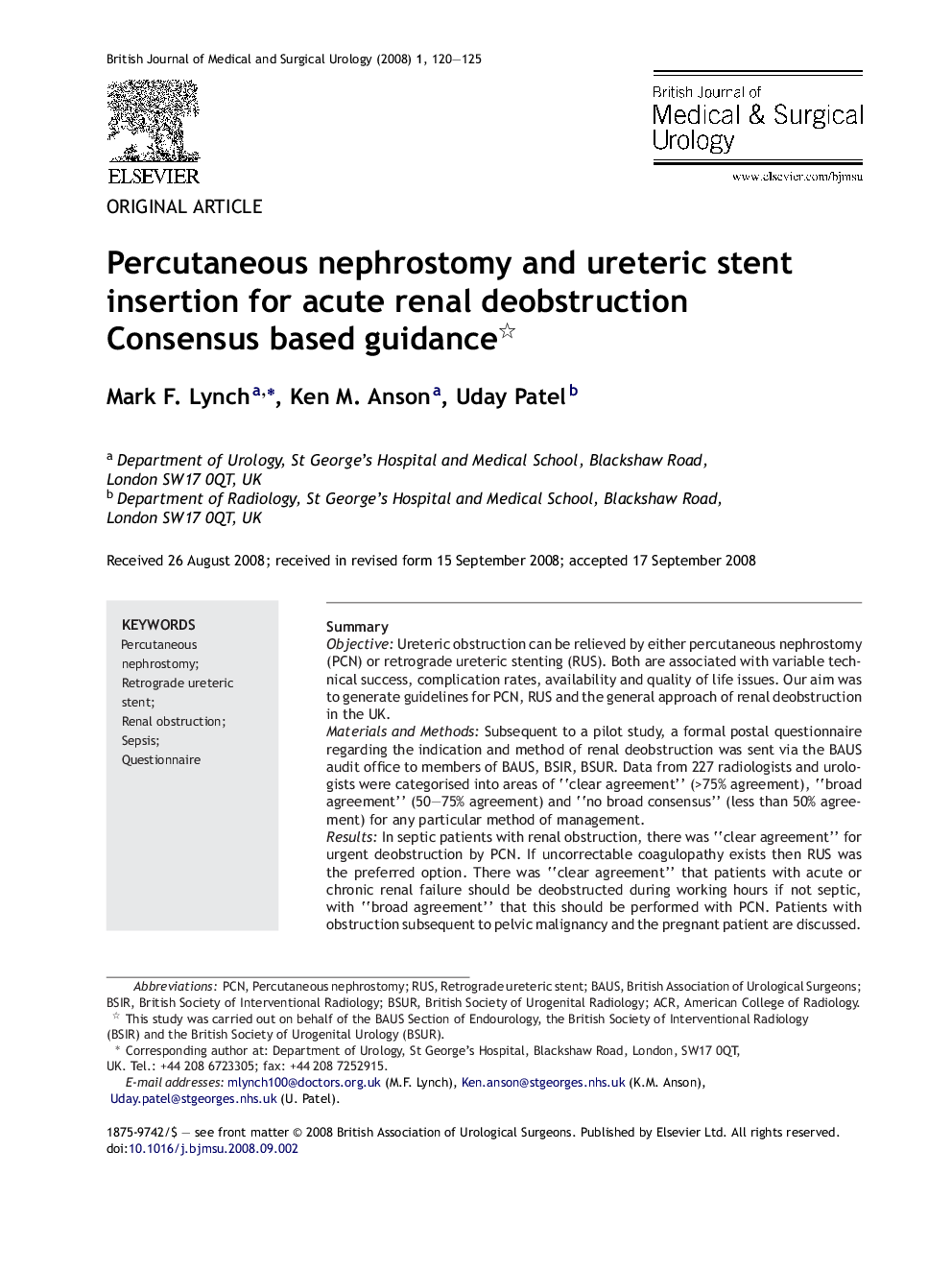| Article ID | Journal | Published Year | Pages | File Type |
|---|---|---|---|---|
| 4268611 | British Journal of Medical and Surgical Urology | 2008 | 6 Pages |
SummaryObjectiveUreteric obstruction can be relieved by either percutaneous nephrostomy (PCN) or retrograde ureteric stenting (RUS). Both are associated with variable technical success, complication rates, availability and quality of life issues. Our aim was to generate guidelines for PCN, RUS and the general approach of renal deobstruction in the UK.Materials and MethodsSubsequent to a pilot study, a formal postal questionnaire regarding the indication and method of renal deobstruction was sent via the BAUS audit office to members of BAUS, BSIR, BSUR. Data from 227 radiologists and urologists were categorised into areas of “clear agreement” (>75% agreement), “broad agreement” (50–75% agreement) and “no broad consensus” (less than 50% agreement) for any particular method of management.ResultsIn septic patients with renal obstruction, there was “clear agreement” for urgent deobstruction by PCN. If uncorrectable coagulopathy exists then RUS was the preferred option. There was “clear agreement” that patients with acute or chronic renal failure should be deobstructed during working hours if not septic, with “broad agreement” that this should be performed with PCN. Patients with obstruction subsequent to pelvic malignancy and the pregnant patient are discussed.ConclusionThe authors hope that these results and recommendations will aid clinical decision-making and aid the development of local and regional PCN and RUS services.
